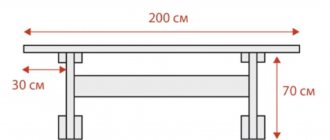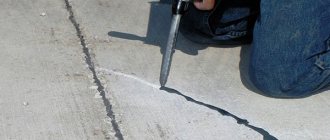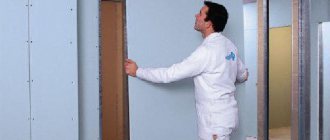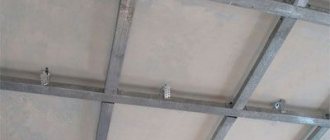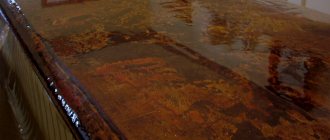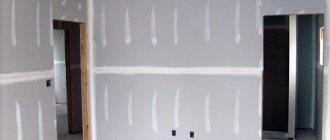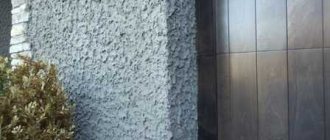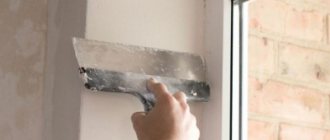A retaining wall is a structure installed to prevent soil destruction in the slopes of embankments or deep excavations.
The calculation of a retaining wall is carried out by highly qualified specialists, since the reliability and durability of the entire structure being built depends on the quality of the work performed. Such walls are widely used in the construction of pits and trenches, fences and anti-landslide systems. This engineering structure is in demand and necessary when performing construction work related to the construction of country houses in areas characterized by significant elevation differences. These may be hills, ravines or steep slopes.
Design and calculation of a retaining wall
Retaining walls are built to prevent landslides.
Before designing a wall, you need to evaluate the factors that can affect its stability. These include seismic phenomena, winter swelling of the soil, vibrations (for example, from railway tracks), and erosion by rain. The thickness of the structure is selected according to the height and characteristics of the soil. For example, a high retaining wall standing on relatively soft soil should be fairly thick. The structure must be erected on stable soil made of crushed stone, gravel or clay. The freezing depth should not exceed 1.5 m. Groundwater must not rise higher than 1-1.5 m below the surface.
If the height of the building is more than 2 m, its stability is also affected by the strength of the wind. Such walls are especially demanding in terms of accuracy of calculations, requiring attention to a number of factors: soil mobility, density of building materials, susceptibility to cracks. They should be carried out by specialists, based on professional guidelines. You can mount low structures with your own hands (no more than 1.4 m of the above-ground part).
The slope at the rear of the structure can be steep or gentle. The side shape of the structure is usually a rectangle or trapezoid. The dimensions of the sole should be 50-70% of the wall height. The thickness is selected depending on the characteristics of the soil. If it is plastic and consists mainly of sand and clay particles, the support must be massive. In this case, the thickness is equal to half the height. For hard soils (quartz, spar and the like) the ratio of parameters will be 1:4, for intermediate options – 1:3.
Effective loads and stability
When building a retaining wall, the weight of the soil that will put pressure on the structure is taken into account.
Calculation of retaining walls requires an understanding of the loads acting on the structure. They influence the choice of building materials and arrangement of the foundation. Constant loads are divided into horizontal and vertical. The first includes the soil pressure behind the structure and the friction force in the areas of their contact. The second includes the mass of the wall, pressure on its upper part and backfill.
In addition to constant loads, there are temporary ones:
- seismic loads;
- water leaks;
- vibration (railway or highway);
- exposure to wind (especially in relation to high walls);
- swelling of soil layers in winter.
To prevent shifts and increase stability, you can organize a slight tilt towards the elevation. This reduces soil pressure on the rear of the structure.
Weight distribution is aided by a console in the front area. It is advisable to make the side facing the ground non-smooth. Structures made of brick, stone or blocks have projections. Monolithic walls are chipped.
Well-designed drainage also increases stability. To reduce vertical pressure, you can fill the gap between the soil and the back of the wall with expanded clay or similar building materials with a hollow structure.
Retaining wall device
Sectional diagram of a retaining wall - backfill, main part, drainage, foundation
The structure includes a foundation, main part and drainage system. Almost all wall options are a configuration of these three elements. Their execution can be different and is determined by their purpose, soil characteristics and available resources.
Foundation
It is equipped for any walls whose height exceeds 0.3 m. The structural features depend on the soil on which the work is carried out, as well as on the characteristics of the body. If there is a lot of clay in the soil, they opt for a strip foundation formed from blocks. On soft soils containing a lot of sand (especially “floating” sand), the foundation is organized on piles. Low walls (0.3 m or less) are buried in the soil without a foundation.
The depth of the laying depends on the height of the above-ground part. If it is small (0.3-0.8 m), the foundation has dimensions of 0.2-0.3 m. For walls of 0.8-1.5 m, the depth will be 0.3-0.5 m, for higher ones (but not more than 2 m) - 0.7 m. If the soil is highly mobile or groundwater is close (less than 1.7 m), a depth is 1.5 times greater than the width.
Body
Approximate dimensions of retaining walls
This is the part of the fortification that rises above the ground. For the structure to be stable, it must be heavy enough. This is where attention to wall thickness comes from. Before you start laying out the body, you need to prepare a drawing in advance.
Some wall options are highly rigid. This includes brick and stone masonry, monolithic concrete, buildings made of blocks connected with cement mortar. Other types of walls have elasticity. They are able to withstand slight deformations without cracking. These are gabion and dry stone masonry. The tops of such configurations must be at least 0.45 m wide.
The amount of inclination of the front part depends on the structural features. If the structure is firmly fixed and the total height of the body and foundation is less than 1.5 m, there is no need to make a slope for this face. In larger buildings, a slight slope (within 15 degrees) contributes to the visual perception of the wall as vertical and also increases stability.
The angular value of internal friction depends on the type of soil and its porosity. The angle is smallest for clay, and the largest for gravelly soil.
Drainage and drainage
The functions of this system are the accumulation and removal of excess liquids of various origins (ground, rain, melt water). This helps prevent the wall from eroding and flooding. Designs can be transverse, longitudinal or mixed.
Retaining walls made of various materials
The main parameters when selecting a material for construction are its water resistance, immunity to aggressive environments, easy accessibility and chances for a long service life. The height of the building also matters.
Made of wood
To make a wooden structure more stable, it is filled with a solution of concrete in the ground.
Supporting walls made of wood are attractive in appearance, but the material is not one of the most durable. To improve performance (to achieve resistance to rot and moisture), logs and beams are treated with special compounds. The sides from which the structural elements will be buried are burned or coated with liquid bitumen. The tree is suitable for the construction of low buildings (no more than 1.5 m).
Vertical and horizontal arrangement of logs in the support object is possible. In the first case, the digging depth is one third of the length of the beam. A 0.15 m layer of crushed stone is poured into the prepared trench, which is then compacted. The logs are placed tightly one to one and reinforced with wire. To make the structure more stable, the trench is filled with a mixture of cement and sand. The back part is covered with sealant (for example, roofing felt) and covered with soil.
When arranging a horizontal configuration, support pillars are first buried. The distance between them is 1.5-3 m. The smaller it is, the more reliable the structure will be. Horizontal elements can be placed in grooves pre-cut in the posts, or to their rear parts. In the second case, you need to lay out the waterproofing material in advance, since the first beam will be placed on the ground. The logs are secured to the support posts with wire ties or nails.
Made from concrete
A wall on screw piles is constructed on loose moving soil.
A concrete retaining wall is mounted on piles (bored or screw) or on wooden formwork. The first case is preferable if you have to deal with unstable soil or if the wall consists of several blocks. The finished monolithic slab of industrial production is installed in a pre-dug trench using a forklift. In this case, there is no need to prepare the foundation if the soil is not loose and unreliable. A console made at a slight angle towards the embankment (10-15 degrees) will make the wall more stable.
Step-by-step instructions for installing concrete reinforcement:
- A trench of sufficient depth is prepared, which includes space for a bed of gravel and sand. In front of the future wall you need to leave 0.3 m of space, for the back edge - 0.5 m. The soil to create the slope is removed manually. The slope is checked when preparing the formwork and filling it with concrete and straightened as necessary.
- The foundation is being reinforced. Metal rods that protrude from the concrete thickness must have a height of at least 0.5 m. The sole is left to be fixed for about a month. There is no need to perform any work before this period has expired.
- For the manufacture of formwork, plywood material is used, treated with a composition that ensures water resistance. Dimensions – 244 * 122 * 15 cm. Three sheets are used for one workpiece: one for each edge and a third, cut, for the sides.
- Reinforcement helps prevent seams from coming apart. Upon completion of the pouring, holes are drilled in the side area into which the rods are inserted. They can be arranged in a checkerboard pattern. The distance between adjacent elements is 0.4-0.5 m, the length of the outgoing tails is 0.3-0.4 m.
- To create connections between the edges, metal corners are suitable. 5*5 cm beams can be nailed along the perimeter of the formwork. Reinforcing supports are installed on three sides.
You can cover the surface of the slab with stone. In order to reduce costs, instead of concrete blocks, expanded clay and foam concrete, as well as slag and gas blocks are sometimes used. This is not recommended due to the insufficient strength of the materials.
From stone
Stone masonry is suitable for low retaining walls.
Such a building will have an attractive appearance and fit well into the landscape. The material is suitable for creating low (less than 1.5 m) configurations. Laying can be done using wet and dry methods. The latter method requires more skill from the work manufacturer - he will need to adjust the dimensions of the elements so that they fit best together.
The foundation type is strip. If mortar is not used when constructing the wall, the seams can be filled with soil, into which the seeds of crops that have a fibrous root system can then be planted. This will make the structure more aesthetically pleasing and stronger.
From gabions
Laying a retaining wall from gabions
This option is attractive due to its flexibility and moisture permeability - you don’t have to do drainage. You will need large crushed stone or rounded river stones. The assembled boxes are mounted on leveled soil and filled with filler. Between them you can fill the soil with seeds. The sections are connected with wire ties treated with an anti-corrosion compound.
Made of brick
You can make a wall up to 1 m high yourself, otherwise use the services of a specialist. The material is well-burnt red brick, laid on the mortar in a sling. Use a strip foundation with a depth of at least a meter and a width three times greater than that of the wall. A crushed stone or gravel backfill of 0.2-0.3 m is made at the bottom, and a sand layer of 0.1-0.15 m is placed on top. Single brick masonry is suitable for fortifications with a height of less than 0.6 m. For larger walls it is made in one and a half to two units, while the lower area will be wider.
Description of the technology for pouring a support structure with your own hands step by step
The technology for creating a retaining wall begins with digging a trench . To do this, you can order an excavator or do everything manually using shovels. The trench is leveled using shovels.
Wall reinforcement
To strengthen a retaining wall when it is thick and high, reinforcement is used.
For this, metal rods and rods are used. After a layer of crushed stone or expanded clay, reinforced mesh or rods are laid at the bottom of the trench - this gives the foundation strength.
The rods are placed vertically along the entire contour of the ditch . Thick rods are installed vertically, then thin wire is welded to them horizontally.
The result is lattices that are connected by bridges with a thickness less than the thickness of the thickest reinforcement in the structure.
Creating formwork
At the next stage, formwork is created. For this, wooden boards with a thickness of at least 3 cm are used. To connect the boards, wooden blocks with a cross section of 5x10 cm are used.
To fix the formwork, metal pins are used: they are driven into the ground in increments of no more than 50 cm. The formwork begins to be built from the back wall, then the rest of the structure is made.
Creating drainage and other actions
Drainage is made of moisture-absorbing materials. To do this, you need to make a hole with a diameter of 10 cm in the retaining wall and place a polymer tube there that will remove moisture.
Next, mix the solution in the following proportions:
- cement 1 part;
- sand 3 parts;
- fine crushed stone 1 part;
- water 1 part.
Concrete is poured after installing the reinforcing belt along the entire length of the formwork. Cured concrete is periodically moistened with water to prevent cracking. At the final stage, waterproofing is carried out using roofing felt or roofing felt.
Drainage system
An example of arranging a drainage system for a retaining wall.
Transverse drainage is organized by placing tubes with a diameter of 50 mm in the thickness of the wall or by arranging holes with a diameter of 100 mm. The distance between adjacent holes is 1 m. Another option is not to cement any of the vertical joints in the lower rows of stone or brick masonry.
With the longitudinal method, a flexible drainage tube with corrugation is placed along the length of the structure on the foundation. It must first be wrapped in geotextiles.
Price for pouring work
The total cost of pouring a concrete retaining wall varies according to the regions of Russia:
- In Moscow, for such work they will ask for 3,500 rubles per linear meter, while 1,500 rubles will have to be paid for arranging the foundation of the wall.
- In Novosibirsk, they charge from 5,500 rubles for a wall up to 100 cm, while another 1,500 rubles will be charged for digging a trench.
- In Krasnodar, turnkey work will cost from 5,940 rubles per linear meter.
Special approaches taking into account the landscape
The aesthetic qualities of most of the materials used and the design of the building itself make it possible to make it an element of the landscape. You can plan the execution of a retaining wall on a site with a slope in accordance with the terrain. In a small area with a fence, a low wall (up to 0.6 m) will look good. If you decide to build a structure of large dimensions, to harmonize the appearance you should make the landscape richer in elements (benches, steps, alpine slide, etc.). You can decorate the wall with moss or climbing plants. Surface finishing can be done with different facing materials - small pebbles, natural or artificial stone, tiles.
Briefly about the main thing
Retaining wall structures are used on land plots with uneven terrain. Its main task is to become a barrier to soil sliding down the slope and to create conditions for the formation of a level area.
Materials for construction can be stone, brick, concrete blocks, lumber. Often this structure is erected in the form of a monolithic structure.
The wall can provide additional decorative content to landscape design.
Retaining walls were considered: their types and designs.

